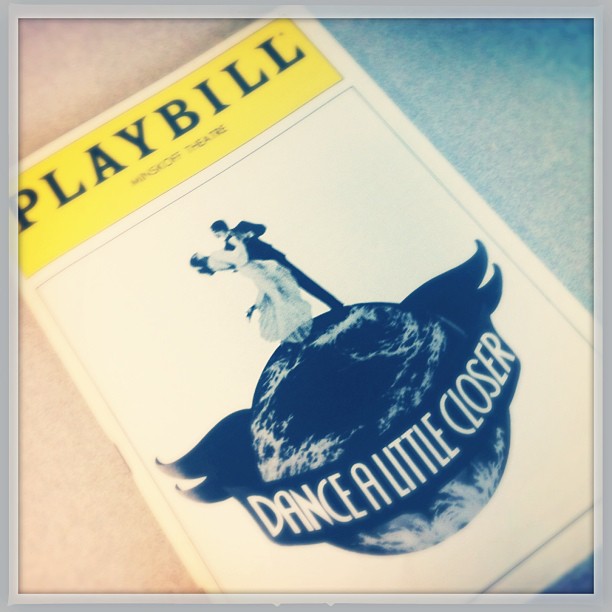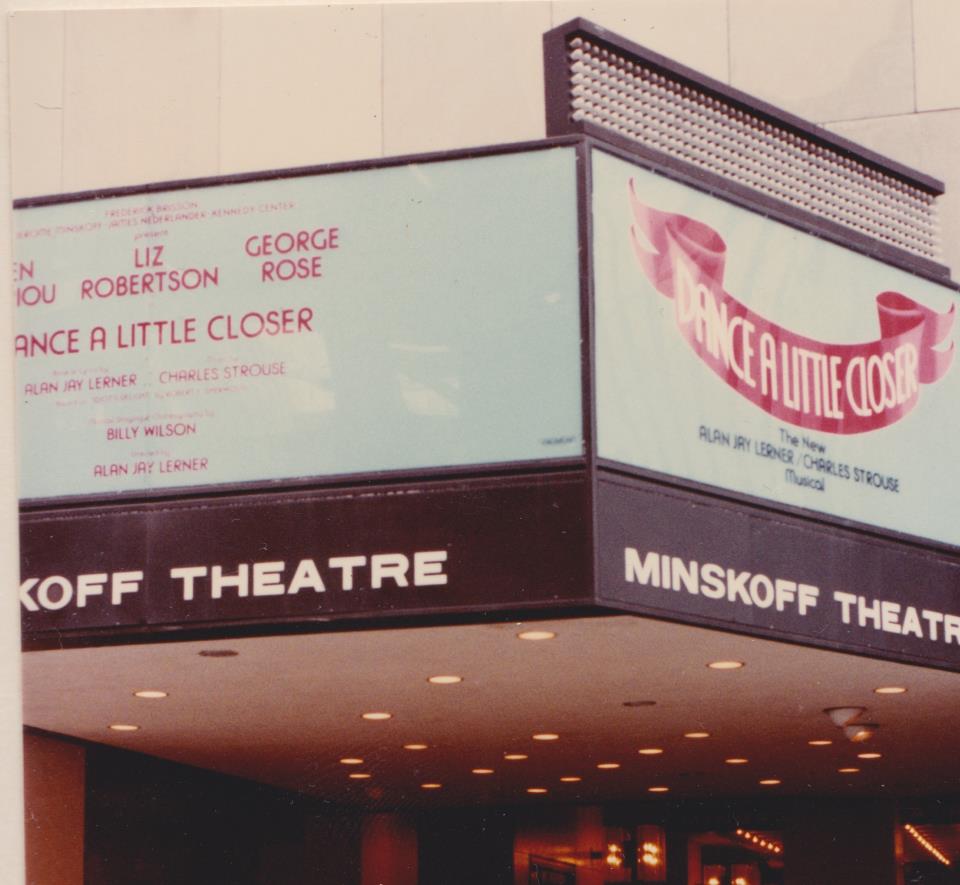The New Year’s Eve Musical: Close a Little Faster
With the end of 2015 almost upon us and the reassuring possibilities of 2016 ready to work their magic, I started thinking about musicals that place on December 31st as the world counts down to a new year. There are not many musicals that fit this distinction and the only one that instantly comes to mind is the notorious flop of 1983 called Dance a Little Closer, apparently so disastrous that it was nicknamed “Close a Little Faster.” As is the case with most hyperbolic statements, Dance a Little Closer wasn’t all awful. In fact, the score with music by Charles Strouse and lyrics by Alan Jay Lerner has much to recommend and is, even at times, quite delightful.
Dance a Little Closer was adapted loosely by Lerner (who also served as book writer) from the 1936 Robert Sherwood play Idiot’s Delight. Idiot’s Delight was once a very popular play in the United States and it was awarded the 1936 Pulitzer Prize for Drama. Set in the Italian Alps on the precipice of a world war, the action surrounds several hotel guests of the Hotel Monte Gabriele and reveals how the impending conflict will shape and change each of their lives. The original production featured such luminous stars of the stage as Alfred Lunt, Lynn Fontanne and Sydney Greenstreet. The play was made into a movie starring Clark Gable and Norma Shearer in 1939.
In many ways, Dance a Little Closer is similar to Grand Hotel, a story that is a tapestry of several hotel guests, each working their way through some conflict or life-changing problem. Lerner’s adaptation of Idiot’s Delight brought the action into the “avoidable future” and is set on New Year’s Eve at the Alpine Barclay Paris Hotel (Austria). In the 1980s, the threat of nuclear war was palpable, with the fear of the U.S.S.R. and the Cold War still playing out its unnerving mind games. Resetting the story within the nightmarish possibilities of nuclear apocalypse was an inspired choice in making Idiot’s Delight feel fresh and relevant and perhaps, in some different incarnation, could have worked brilliantly. So where did it go wrong?
Sherwood’s play kept the action contained to a cocktail lounge at the Hotel Monte Gabriele, creating a claustrophobic urgency that was heightened as military maneuvers brought the war closer and closer to the alpine getaway. For Dance a Little Closer, Lerner opened up the play, moving the action to various locales around the resort, including a scene set at the hotel ice skating rink. Of course, most musicals adapted from plays need to be opened up so that they have room to breathe and to become “musical”. However, in the case of Dance a Little Closer, the liberation of space seems to have cost the story that much-needed sense of the walls closing in. This is a story about people who are trapped and preparing to die.
Another problem with Dance a Little Closer was the characterizations of the hotel guests. People who were mysterious and compelling in Sherwood’s play were reduced to unpleasant and generalized caricatures for the musical. One particular instance of an absolutely cartoonish misstep came in the broadly drawn, stereotypical representation of a homosexual couple. A top-notch cast including Len Cariou, Liz Robertson and George Rose could not do much to infuse any of these cyphers with humanity, though Robertson and Rose particularly found moments to shine despite the material.
Where Dance a Little Closer succeeds the best is in the lush and vibrant melodies of Charles Strouse, his best work since Bye, Bye, Birdie. The title song is haunting, a reflective slice of regret, nostalgia and denial. This is just in the tone of the music; the melody is that rich and evocative. In the right show, Lerner’s lyrics would have elevated the song to something exquisite, but here the words just seem underwhelming considering the urgency of the plot and situation. Where Lerner’s lyrics really fall apart are in the song “Mad”, a list song sung by the male lead that details all of the things in the world that aggravate him. Lerner is usually a sharp, sophisticated wit (My Fair Lady and Gigi both proved this, despite their misogynistic overtones) but here he seems to go for cheap laughs, clichés, and even sometimes offensive stereotypes. There is no justification for this character’s contempt, just a song-long bitch session that never really goes anywhere and never serves the purpose of establishing any character development.
Dance a Little Closer opened at The Minskoff Theatre on May 11th, 1983 and closed the very next day after critics eviscerated it. Surely, the creators must have saw this coming and were prepared to close so quickly. This was, however, back in the day when a Frank Rich review in the New York Times could make or break you and surely his pan established an early jolt of reality. Dance a Little Closer may have disappeared quickly, but it did leave behind a cast album that6 is worth listening to. Even if the lyrics are not Lerner’s best, Strouse’s music mostly soars. The overture may well be one of the best tracks on this recording. In celebration of New Years, take this cast album off of the shelf, dust it off and revel in what could have been. There is no better way to start your 2016.









